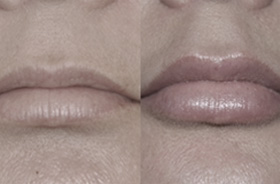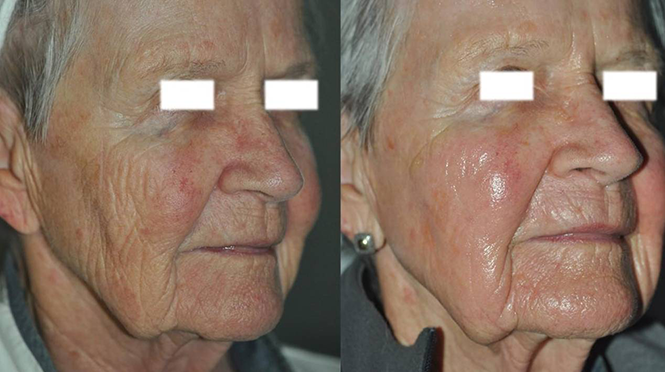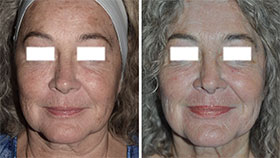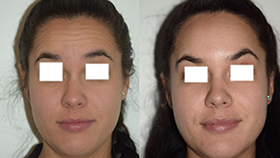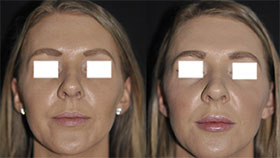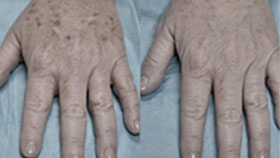Physical vs. Chemical Sunscreen: What’s the Deal?
Hawaii is the first state in the United States to ban the sale of sunscreen containing the coral-harming chemicals oxybenzone and octinoxate, ushering in a new era of reef-safe sunscreen. The new law goes into effect January 1, 2021, but many visitors and residents are already trading in their non-reef-safe sun protection.
So what does this mean for the rest of us—especially in sunny places like Florida, where skin cancer is a concern? Is this the first in a wave of new regulations regarding safe manufacturing and development practices for sunscreens? Before we speculate on the future of personal and environmental sunscreen safety, let’s discuss what the difference is between the two categories.
Ultraviolet Radiation: Easy as ABC
Ultraviolet radiation is a portion of the electromagnetic spectrum that can be divided into three subtypes: UVA, UVB, and UVC. UVC is a clinically unimportant subset due to it being filtered very efficiently by the ozone layer. UVA and UVB are the clinically important segments of the UV spectrum.
UVB rays are responsible for producing sunburn and play the greatest role in causing skin cancers. UVA rays also play a role in skin cancer formation, but will penetrate more deeply into the skin and play a greater role in premature skin aging, otherwise known as photoaging. Traditional chemical sunscreen products have been more successful at blocking UVB rays than UVA rays.
The classical approach to developing a sunscreen is to incorporate enough chemicals that have known properties of blocking segments of the UV spectrum. These chemicals will absorb certain wavelengths of UVB rays, thereby not allowing them to penetrate the skin. Choose enough chemicals that provide a complete block for a given segment of the UV spectrum, and voilà, you have a sunscreen.
The Chemical Challenge
Unfortunately, many of the classic chemical sunscreen ingredients provide protection for the UVB spectrum only. Interestingly, the SPF factor found on all sunscreens refers to their protective qualities for UVB rays only. SPF designations have no relationship to the quality of protection for UVA rays. That brings us to physical sunscreen ingredients.
Physical sunscreens refer to chemically inert ingredients that block UV rays by exactly that: physically blocking them rather than chemically absorbing them like chemical sunscreen ingredients. Think of an umbrella. Since physical sunscreen ingredients refer to titanium dioxide or zinc oxide, it is clear they are metals and can be better thought of as a suit of armor.
Some forums have echoed concerns for the health effects of using these metals on the skin, but the fact of the matter at this time is that there is a complete dearth of scientific information suggesting such a risk. Chemical sunscreens, on the other hand, have a wealth of data showing the deleterious effects on human biology and the environment.
So, What to Do?
Whether this data is clinically relevant or outweighs the risks of UV exposure with regard to skin cancer development remains to be determined. We do have a national epidemic of skin cancer that is only hyperbolized here in Southwest Florida. People should weigh their risk factors for skin cancer development and the alleged concerns with chemical sunscreens. Physical sunscreens remain a safe alternative and provide effective, broad coverage for UVA and UVB rays here in Southwest Florida.
I anticipate that the regulations set forth by Hawaii will only be a growing trend for future regions, environments, states, and nations. Transition to a physical sunscreen is not only a safe alternative, but an effective one for skin cancer prevention. Some of our favorite physical sunscreens are those made by EltaMD®. They have been ahead of the curve when it comes to the commitment for physical sunscreen development.
Everyone should be using sunscreen. So, in summary, make it a physical one and call it a day.
To learn more about mitigating skin cancer risk, as well as protects to protect against and repair sun damage, contact Skin Wellness Physicians by calling (239) 732-0044 or sending a message online.



